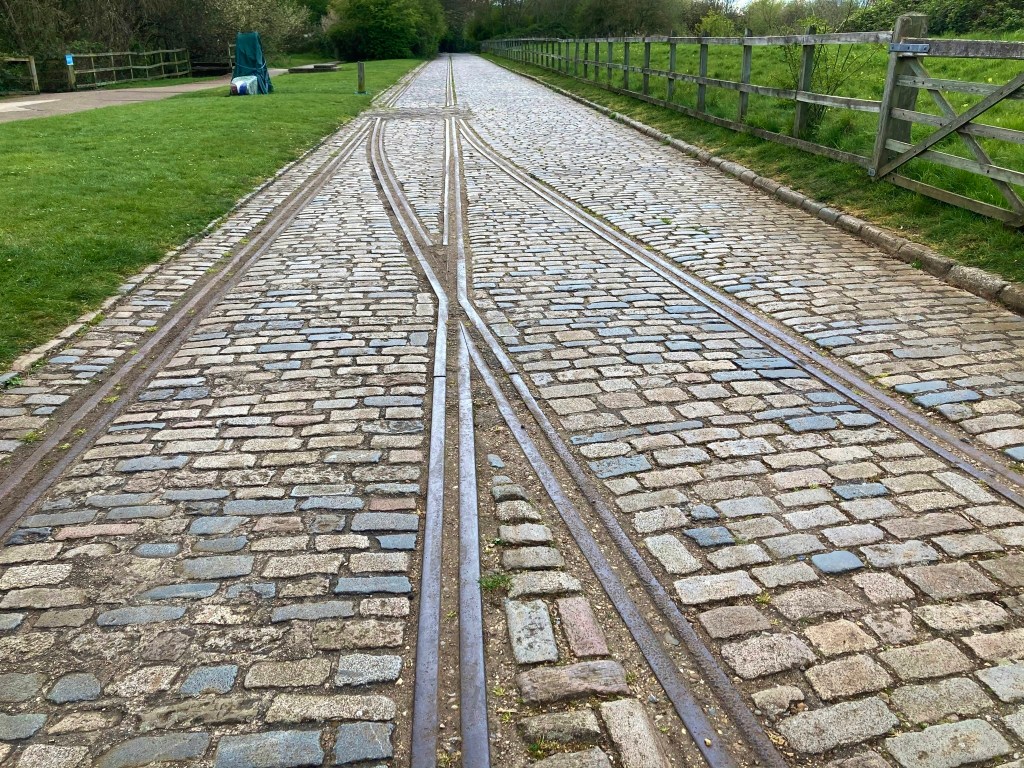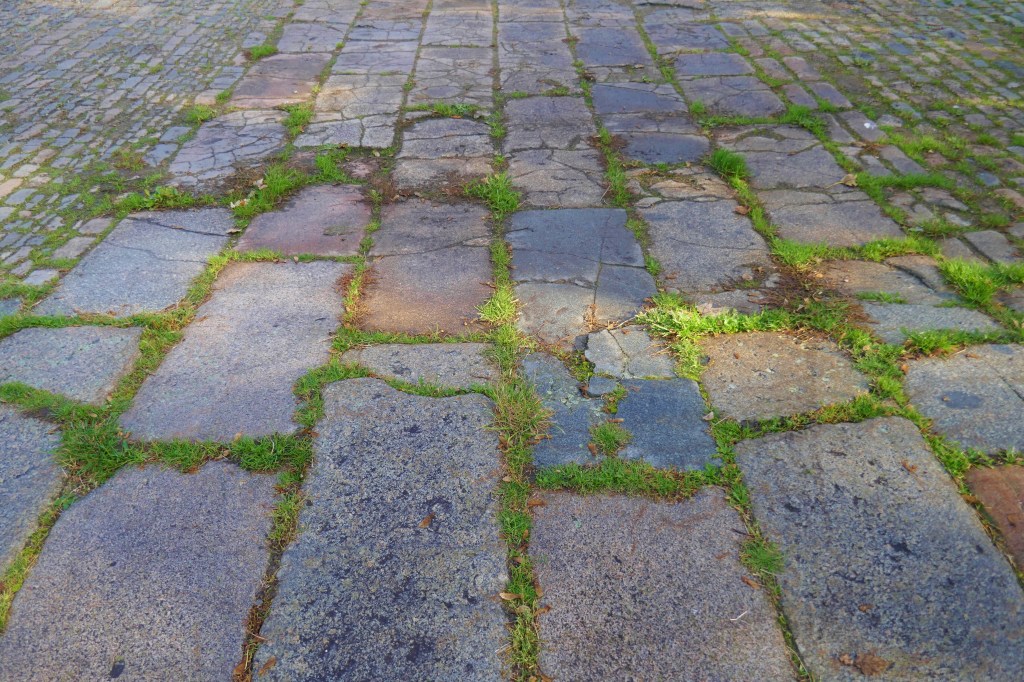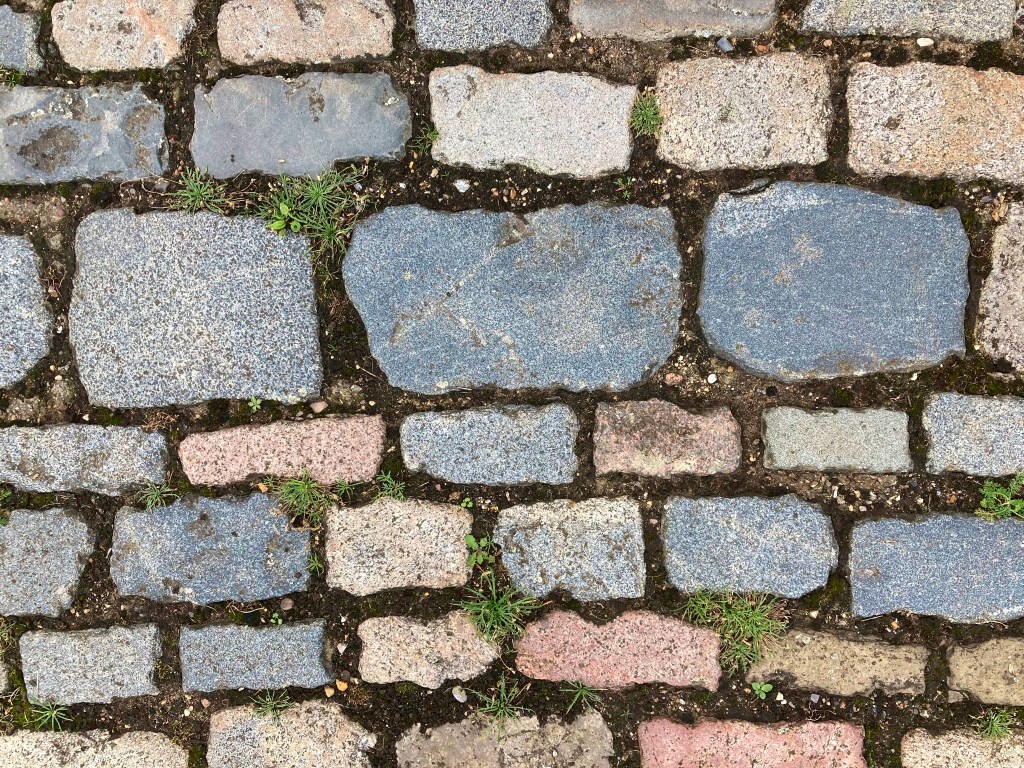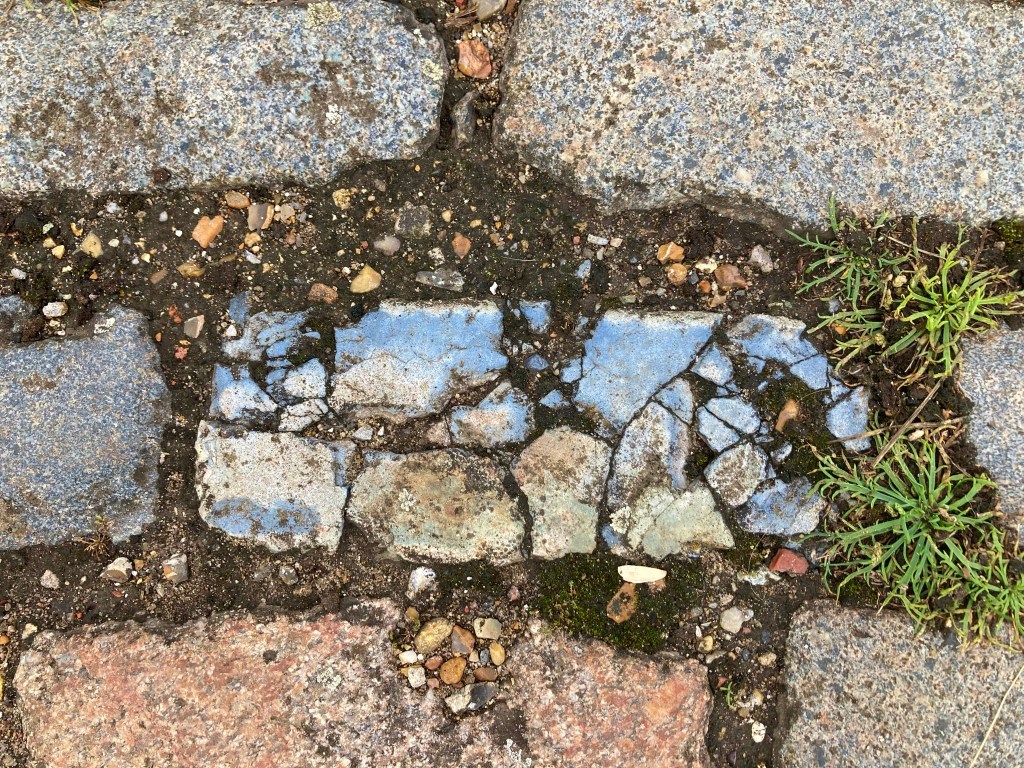
The Middlesex and Essex Filter Beds are nature reserves either side of the Lea Lea at Leabridge in east London, both built in the 19thC as part of the Lea Bridge Water Works of the East London Waterworks Co. and I’ve blogged about the Middlesex Filter Beds before for it’s magnificent granite Natures Throne at https://buildinglondon.blog/2021/10/30/17-natures-throne-and-the-hackney-henge/
But a quick update: the waterworks were constructed in 1856 to filter water for drinking supplies for east London, though redesigned in the 1880s to the configuration seen today. [1] [2] British History Online states “The East London Waterworks Co., incorporated to supply Hackney and other parishes from the Lea in 1807, secured further powers in 1829 and had made a waterworks channel from Lea bridge to Old Ford alongside the Lee trustees’ Hackney or New cut by 1834. The supply was increased by reconstruction at Lea bridge in 1837. Lea bridge reservoir was built between the river, the cut, and the new channel and in 1838 the reservoir at Clapton was replaced by one at Stamford Hill, where by 1891 it had made way for houses on the west corner of Portland Avenue and Darenth Road. Under an Act of 1853 filter beds were built at Lea bridge, one on the Essex side of the Lea and the other replacing Lea bridge reservoir. A new engine was installed in 1854 and two more filter beds, on the Essex bank, were built under an Act of 1867. “ [3][4]
And like anywhere else of course it needed paving, and the paths of both the Middlesex and Essex Filter Beds have a glorious collection of different sized shiny and colourful setts and blocks of different granites and grandiorites and some scoria!

And a clarification: Setts are rectangular blocks of stone, usually granite but not always. [5]
People often confuse setts and cobbles, referring to ‘cobbled streets’ when the roads are paved with granite setts not cobbles. Cobbles are the stones you find on beaches and in river beds and they’re rarely only seen in conservation areas as they are not good for walking or cycling or and can’t take vehicles. I blogged in Post 2 about Upper Watergate Street in Deptford https://buildinglondon.blog/2021/12/12/21-upper-watergate-street-the-oldest-street-surface-in-london/ and but these are atypical for cobbles being exceptionally large and really boulders not cobles. See these two really good articles from The Paving Expert for a good explanation of the terms. https://www.pavingexpert.com/setts01 https://www.pavingexpert.com/cobble01

One of the aims of this project was to learn all the British building stones and materials used in London historically, and that is possible e.g. for the limestones, and loving the textures and colours of granite setts it would be great to be able to identify the origins of these too Ruth Siddall of London Pavement Geology has sugegsted [6] that while it may be possible to identify granites, and similar igneous rocks, in a wall, from the crystals, and maybe then the region they are from, it would be very hard to identify setts, nor less then quarries they were from. She stated ” … in term of purchase of stone … various quarries were contracted. There is regional variations – so in London we predominantly see stones from Leicestershire, Channel Islands, Cornwall and the continent. They would have been shipped from a quarry and then dumped in a building yard. Contractors would come and take a cart load but it would be a jumble of stones.”
So they were essentially all mixed up whether from Cornwall, Guernsey, Wales, Leicestershire, Scotland, Norway, Belgium and or even India, as you can clearly see at the Middlesex and Essex Filterbeds ! Occasionally you do come across places where they are all identical but that is unusual in this period.

But, a semi-informed guess that some of the granite setts here by the River Lea, will have been from some of the quarries this blog has already covered, in Cornwall and Devon, or Trefor in Gwynedd, or ones like Penmaenmawr also in Gwynedd and the Mont Sorrell quarry In Leicestershire, which supplied granodiorite setts across Britain, but that many of them may well be from Europe, from Norway or Belgium.

According to Robert Sherlock in his fascinating “Man as a geological agent : an account of his action on inanimate nature” in 1923 it was not until “About 1830 London began to be paved with granite setts, of different sizes according to the class of streets” .. and stating that in Manchester “The Penmaenmawr setts were found to be almost everlasting ; next came, in order, Guernsey, Mt. Sorrel and Aberdeen granite.” [7]

Different cities used different sources not surprisingly and the different railway companies bought different stones into London depending on their routes and setts also would have still come to London by sea, from Scotland and from Cornwall. E.g. Mountsorrel setts “… were transported by The Midland Railway which was closely allied to the London, Tilbury and Southend. Leicestershire granites are often a rich pink to red colour and are very clearly obvious in the old goods yards of these two companies. The Great Eastern Railway, however, was allied with the Great Northern Railway, likely to be using a dark granite from the North of England. The Great Western Railway stretched to Devon and Cornwall where, especially from Cornwall, come the familiar very light silver grey setts. The London & North Western, as its name implies connected London to the North west and thence to Scotland. Most of its sources are darker greys and blacks – often basalts rather than granites.” [8]

In 1904 Paul Hasluck wrote in his ” Road and Footpath Construction – Macadamised Roads; Stone, Wood, and Asphalt Paving” “Amongst the many classes of granites used for street pavements may be named the following : Aberdeen, Tyar Baggar (also from near Aberdeen), Guernsey, Penmaenmawr, Glee Hill, Port Nant, Port Madoc, Dalbeattie and Irish granites from Newry and Bessbrook. In addition to these, there are the syenites from the Markfield, Groby, and Mount Sorrel quarries in Leicestershire, Fogginton in Devonshire, and some Cornish stones. The two last-named are, however, too soft for heavy traffic. The Carnarvonshire syenites are dense and heavy, and form one of the very best paving materials. The old blue Penmaenmawr and the Mount Sorrel stones are said to wear very slippery, and the latter has the objectionable quality of being very brittle under the dressing hammer. Aberdeen granite has been largely used in London, and that from Guernsey is held equally in favour by some authorities. As to the comparative merits of Welsh and Aberdeen setts, there seems to be much conflict of opinion. The Welsh syenites are said to be inferior in hardness and durability to the Aberdeen granite, but are very largely used in Liverpool, Manchester, and the large manufacturing towns of Lancashire, no doubt because the smaller traffic upon them makes them the cheaper material for that part of the country. A comparison of the relative durability of Guernsey and Aberdeen setts was afforded when Blackfriars Bridge was repaired in 1840” [9]

Don Clow for the Greater London Industrial Archaeology Society in his ‘From Macadam to Asphalt: The Paving of the Streets of London in the Victorian Era’ noted “In addition to that from Aberdeen, granites from Guernsey and Mountsorrel in Leicestershire were used in quantity in the Metropolis later in the century. Other sources included Cornwall, Ireland, and Scandinavia. Clee Hill setts were sent by rail to the London area” [10]

The John Watson Building Stone Collection has a extensive collection of granite and other road setts and see the post here for more details https://buildinglondon.blog/2021/12/20/23-the-john-watson-building-stones-collection-at-the-sedgewick-museum-in-cambridge/


Scoria is very different though and very interesting! It’s fairly unusual in London being a by-product of the Teeside iron industry and not clay or concrete based like other bricks. See Post 22 on this blog for more details on Scoria. https://buildinglondon.blog/2021/12/17/22-stepney-green-scoria/


The scoria bricks appear to have been used for repair work in the paving, maybe when a pipe was put into the road but strange that the setts themselves were not re-used. Maybe they were cheaper?

It’s also interesting to think when these setts and bricks went down. The scoria is in a way the easiest. CH Morris in Number 13 (1981) of The Cleveland Archeologist notes that the blocks were first marketed only in 1880 and that production had pretty well stopped by the 1950s, so that must be post 1880. And the granite setts? Probably from the 1853 establishment of the filter beds and the pumping station based on their irregularity. [11]

Postscript: Join a union!
There’s an excellent website (or 2 actually, McJazz and Doric Columns, though one appears to be an updated version of the other) on the history of Aberdeen, the source of millions of granite setts used in London and almost certainly some of them at the Middlesex/Essex Filter Beds, with a great paragraph on the pay of granite workers .. think that due to it’s reference to trade unions and as it mentions wooden block paving having just been introduced, that it’s from the mid 19thC. The third paragraph appears recent.
“Another important branch in which granite is employed is the laying of roadways, tramways etc., with setts. It is important in more ways than one, if only from the fact that the “causey-men,” or settmakers, were the highest paid of granite workers. The fact is not due to any extraordinary skill or intelligence being necessary, but is alone attributable to the advantages pertaining to a well-conducted union. This the men have long ago recognised, and today have a larger percentage of workmen affiliated than any other workers’ union in the country.
We cannot ascertain when granite setts were first used, but it is many years ago. Of late years an attempt has been made to introduce wood paying, and in many places it has superseded granite, but where a hard-wearing, non-slippery surface is required recourse has to be made to granite, and in this respect granite excels all others. It is many years before granite is worn smooth, which is accounted for by the fact that the concussion caused by the horses’ shoes, instead of acting as a polisher, in reality roughens the stone. Should you take the trouble, when in a City whose streets are paved with granite, to examine a sett after being struck by a horse-shoe you will see what is meant. Although the first outlay is more than whinstone or some wood pavements, it is cheaper in the end, as the relative cost of wood and granite, with the expense of maintaining each for many decades years shows. “

https://www.scotsman.com/whats-on/arts-and-entertainment/how-north-east-granite-paved-streets-london-1476405
“A cassie is a small block of granite. They are used to pave roads and are also called setts. The word cassie comes from “causeway” which means roadway. Cassies were made at quarries in Aberdeen and Aberdeenshire. Millions were produced by skilled sett-makers. Many were sent to London.” [12] [13]
Which union is refers to here? The United Operative Masons’ Association of Scotland formed in Aberdeen in 1831 or the 1844 Aberdeen breakaway Northern Union of Operative Masons [14] or the later Scottish Settmakers Union formed in 1880 in Aberdeen [15] or the or the 1888 United Operative Masons and Granite Cutters’ Union [16] or the late 19thC based Amalgamated National Union of Quarryworkers & Settmakers [17], though clearly they were relatively successful! A large strike of the Aberdeen sett-makers, in 1896, over a demand that the employers repair and sharpen their tools was won! [18]
A further aside to the massive demand for Aberdeen setts in London, partially leading to the strength and militancy of the granite and sett workers, may have been that socialist/communist legend Tom Mann nearly became the second Labour MP in the UK when he was 430 votes from victory in a by-election of 1896 in North Aberdeen, an area including many of the granite quarries! [19] Tom Mann played a crucial role in the development of both the British trade union movement and communist movement though sadly in his later years he was uncritical of Stalinism [20]. The first ‘Labour’ MP was Keir Hardie, in West Ham in 1892 [21], just down the Lea from the Lea Bridge filter beds and also a site of another East London Waterworks Co[22]. Surely Hardie and Mann discussed the Aberdeen granite industry and setts on occasion.

Colourised picture by https://twitter.com/historiacolor
source: Nick Lloyd does great Spanish Civil war/revolution walks in Barcelona https://twitter.com/civil_war_spain/status/1405095662933401605
Visiting
Both sets of filter beds, The Middlesex Filter Beds Nature Reserve and The Waterworks Centre Nature Reserve are now lovely places to visit and in walking distance of London Overground stations Clapton and in Hackney or Lea Bridge Road in Leyton while the 55 bus goes direct to both sites, use stop for the Ice Rink. [23]
References
[1] https://web.archive.org/web/20130801112217/http://leabridge.org.uk/gazetteer/photo-album/middlesex-filter-beds.html
[2] https://en.wikipedia.org/wiki/East_London_Waterworks_Company
[3] https://www.british-history.ac.uk/vch/middx/vol10/pp108-115#s2
[4] https://canalrivertrustwaterfront.org.uk/history/from-sickness-to-health/
[5] https://www.designingbuildings.co.uk/wiki/Pavement#Setts
[6] https://londonpavementgeology.co.uk/
[7]https://archive.org/stream/manasgeologicala00sheriala/manasgeologicala00sheriala
[8] https://www.cedstone.co.uk/technical/the-historic-use-of-granite-setts-and-kerb-in-london
[9] https://archive.org/details/roadandfootpath00haslgoog/
[10] http://www.glias.org.uk/journals/8-a.html
[11] http://cias-teesside.uk/the-cleveland-industrial-archaeologist/
[12] http://www.mcjazz.f2s.com/GraniteIndustry.htm
[13] https://doriccolumns.wordpress.com/industry/granite/
[14] https://en.wikipedia.org/wiki/United_Operative_Masons%27_Association_of_Scotland
[15] https://www.google.co.uk/books/edition/The_Granite_Men/ieV1DwAAQBAJ
[16] https://emuseum.aberdeencity.gov.uk/people/24289/united-operative-masons-and-granite-cutters-union
[17] https://en.wikipedia.org/wiki/Amalgamated_National_Union_of_Quarryworkers_and_Settmakers
[18] https://www.britishnewspaperarchive.co.uk/viewer/bl/0000575/18960706/116/0005
[19] https://en.wikipedia.org/wiki/Tom_Mann
[20] https://libcom.org/files/tommannsmemoirs00mannuoft.pdf
[21] https://en.wikipedia.org/wiki/Keir_Hardie
[22] https://www.gracesguide.co.uk/East_London_Waterworks_Co
[23] https://www.visitleevalley.org.uk/nature-reserves-and-open-spaces/waterworks-centre-nature-reserve-and-field-%26-middlesex-filter-beds

Leave a comment